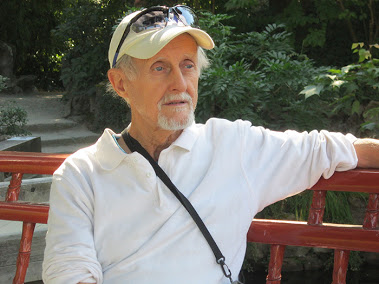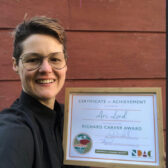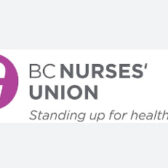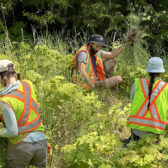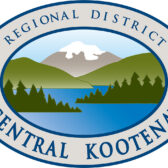Kootenay Boundary Division of Family Practice gives voice
As our pale blue dot spins away in the solar system, not that long ago, the thought of feeling insignificant in the vastness of space and the universe didn’t feel so out of touch.
The perception of being a single grain of sand in the wholeness of the desert seemed intrinsically real. This is now a fleeting thought in time. Our perception of our world has shifted, the family portrait looks different, our entire way of life has been altered and the winds of change are sculpting a new social paradigm. We are no longer feeling insignificant in the world, we are now feeling deeply empowered. We are in essence all in the desert together, as this crisis unfolds unlike anything we have experienced in our lifetime.
No one should make light of a pandemic that has caused death and suffering — especially since there is undoubtedly more to come. But still, it must be said that if we are to have a pandemic, and there will be more to come in our lifetime, the 21st century is a good time in human history to have one.
Throughout the centuries, pandemics used to be more common. The bubonic plague, yellow fever, malaria, cholera and other deadly diseases swept through countries and cities all over the world, and there was little that doctors could do to help the victims. Their patients lived or died as fate and their immune systems would have it.
However, with the evolution of epidemiology as a science in the mid-19th century, these diseases rapidly abated as physicians learned what was needed to prevent them from spreading via insects, contaminated water and other vectors.
The diseases that spread directly from human to human through the respiratory route, such as the flu and coronavirus’s, however, are much harder to prevent. The Spanish flu of 1918-1919 took at least 50 million lives worldwide to put everything into context.
Today, the plague is a trivial disease, easily cured by antibiotics, and that while we are going through a bad time right now, we live in medically very good times, and we have so much to be grateful for given our present circumstances, especially when it comes to our healthcare system in Canada and British Columbia.
A decade ago, primary health care in BC was in decline. Family doctors were disillusioned and disengaged, and increasing numbers of medical students were opting out of family medicine. Recognizing a need for change, Doctors of BC and the provincial government embarked on a journey together to improve primary care. This process began in 2002, with the formation of the General Practice Services Committee (GPSC).
As a first step to improving patient care and physician satisfaction, the GPSC listened to the stories of over 1000 doctors across BC during a two-year consultation process. The message they heard was clear: doctors wanted to be valued, trained, supported, and compensated appropriately within the health care system. Responding to these needs meant finding new ways of empowering doctors to build relationships in their communities, promote leadership, and inspire health care change. A grassroots approach was needed, and as such the Divisions of Family Practice initiative was created and enabled this.
In seven years, the Divisions of Family Practice initiative has become a cornerstone of BC’s primary health care system. In a field as large and complex as health care, the speed and growth of change that has been achieved through divisions is revolutionary.
With over 90% of family physicians in the province engaged in a division of family practice, this movement is shifting the culture of primary health care in British Columbia and supporting the next generation of family doctors to enter the health care system in an exciting environment of collaborative change.
The Kootenay Boundary Division of Family Practice represents family physicians in Castlegar, Christina Lake, Fruitvale, Grand Forks, Greenwood, Kaslo, Midway, Nakusp, Nelson, New Denver, Rock Creek, Rossland, Salmo, and Trail, BC.
Together, members work to improve patient access to local primary care, increase local physicians’ influence on health care delivery and policy, and provide professional support for physicians.
And now, the physicians and nurse practitioners of Kootenay Boundary communities find themselves in the frontlines in the battle against COVID-19, and they are working flat out to be there for their patients and their families.
In this edition of The Daily Dose, editor Jeff Sawyer connects with Paul Edney Communications Lead for the Kootenay Boundary Division of Family Practice to understand how the collaboration between KBDFP and Interior Health are managing during the COVID-19 crisis, and how their priorities and target innovations are helping the community.
* Answers are from multiple Doctors on the Board of the Kootenay Boundary Division of Family Practice, with special thanks to:
- Dr. Trevor Aiken – Kootenay Boundary Division of Family Practice Board Chair (Trail)
- Dr. Shelina Musaji (Kaslo)
- Dr. Max Liu (Grand Forks)
- Dr. Dharma McBride (Nelson)
- Dr. Chelsea Anchikoski (Nakusp)
What is the mission of the Kootenay Boundary Division of Family Practice?
Basically, our job is to bring the voice and leadership of the Family Physicians and Nurse Practitioners to initiatives that:
- Improve patient care and community health
- Strengthen the sustainability of health services
- Improve professional satisfaction of health care providers
- Increase the voice and influence of our members in health care delivery and policy
We do this in partnership with Interior Health and the Ministry of Health, and sometimes local community partners.
What is the structure and central priorities?
KB Division is a not-for-profit Community Service Cooperative made up of all the family physicians and nurse practitioners in the Kootenay Boundary. We have about 165 members, or 99% of Family Physicians and Nurse Practitioners in the region. The Cooperative is governed by a 12-member board made up of 9 physicians and 3 community board members from communities across the West Kootenay’s. About 20 people are employed by or work as contractors for the Division.
Central priorities for the Division are to:
- Improve the efficiency and effectiveness of Primary Care Clinics
- Most of these are the private family physician offices spread throughout our communities. A few of them, esp. in our smallest communities, are run by IHA.
- Improve collaboration and cooperation between Primary Care Clinics and the rest of the health system.
- This includes Specialist Physicians, Health Authority, community services, and hospitals.
- Look for ways to bring more team based care to better serve complex patients.
- Examples include patients with diabetes, chronic pain, and cancer
In addition, we provide a number of programs services that support all the above, including Physician Recruitment and Retention, Long Term Care Initiative, Continuing Professional Development and so on.
How do you think this will evolve and influence the future of medicine and care for the Kootenay Boundary region?
We’ve already seen a lot of influence in the work we’ve done. Better technologies being used in in-patient care. Improved patient outcomes as a result of team based care. Better relationships between clinicians across the region.
As far as evolution goes, our work is really part of a broader wave of change coming to health systems in BC and Canada. As the population ages, everybody realizes that the best way to address a potential sustainability crisis in the public health system is to focus our energies on the preventative aspects of Primary Care. And of course there’s the related crisis in Practitioner availability (as Doctors retire), which will best be addressed by Team Based Care – A greater variety of clinicians working in Primary Care, all at top of scope.
This is really why the Division was created in the first place, to bring the voice of Primary Care Providers to this wave of change.
What are the primary target innovations with Kootenay Boundary Division of Family Practice?
In clinics, we have three main focal points:
-
Team Based Care
- Supporting clinics across KB to further implement team based care in their clinics. This started with a project in Boundary communities to introduce new practitioners into Doctor clinics (social worker, nurse, nurse practitioner) and improve alignment and integration with IH services (e.g. mental health, home health). The goal is to provide patients with the right care, at the right time, by the right provider. Kootenay Boundary has also been chosen as one of 10 BC regions to design its Primary Care Network (PCN) and is currently working with IH to implement the plan to introduce a mix of new resources to clinics in our region, including GPs, NPs, social workers, primary care nurses, physiotherapists and occupational therapists. In addition, the plan proposes some regional support staff (clinical pharmacist, virtual care & aboriginal health coordinator and change management supports (coaches, EMR specialist).
-
Virtual Care
- Supporting patients and providers to interact differently than just face-to-face visits. This is so important in our rural communities as it increases access to care. Taking maternity care as one example, many appointments during the course of pregnancy don’t need an in person appointment. So during a heavy winter for instance, it saves new Mums and Dads from having to travel. The current COVID situation also illustrates that having these virtual care supports in place are essential to ensure patients are getting the care they need during the crisis, when physical appointments are not needed.
-
Future of Clinics Exploration
- We are just starting a conversation with our members and community leaders about the future of clinics themselves. There is a lot of concern about the sustainability of private physician clinics as we know them. Simultaneously, there’s a lot of curiosity about the Community Health Centre model of medical clinics. The idea of larger clinics, with a wider variety of services, and involving community members more, is being explored. There is evidence from other areas in BC, Canada and around the world that the Community Health Centre model increases patient attachment and enhances the team based care approach with the patient at the centre.
In terms of Integration with the rest of the Health System, we have a lot of different initiatives underway. Some highlights include:
- Improved integration between clinics and Interior Health’s Specialized Community Services Program
- Continued work on integrating the social determinants of health in practice – Including the Adverse Childhood Experiences toolkit and the Poverty Tool
- Continued support for Maternity care including our work on perinatal mental healthin the region
Does this address people who do not have a regular primary care provider?
We invest heavily in recruitment, but we don’t expect it to solve our shortage of providers. There’s a recruitment shortage for practitioners across the western world.
But fortunately, the answer to this question is still “Yes” – team based care increases capacity. A practitioner on their own can’t see as many patients as a practitioner working with a team.
I’m sure there is a big focus on streamlining information during the COVID crisis, how do you personally feel the collaboration is between the Interior Health Authority and our local Division of Family Practice when managing expectations with the Ministry of Health?
We already had a pretty good working relationship with the Health authority before COVID, but absolutely this crisis has really let us see the benefits of that relationship. A wide array of initiatives, many aimed at how Primary Care can assist with keeping patients out of hospitals, were rapidly deployed. All of this work was done under the guidance and direction of the PHO, Dr. Bonnie Henry.
With over 90% of family physicians in the province engaged in a division of family practice, this movement is shifting the culture of primary health care in British Columbia and supporting the next generation of family doctors to enter the health care system, how do you envision this revolutionizing the complex health care system regionally?
The work on a new model of clinics is directly targeted to meet the needs of the next generation of practitioners.
New grads want:
- A mix of family practice and sub-speciality care (maternity, emerg., sports medicine etc.)
- To work in teams providing top of scope care for their patients
- To be clinicians and scientists, focused on caring for their patients, not business owners
- To have work life balance
You use the word “revolution”. That may be overstating things a bit, but If you put these four things, and think about everything we’ve said above about team based care and the future of clinics, this is a pretty big shift in the way that practitioners, and patients, experience Primary Care.
What is it like being the communications lead with the Kootenay Boundary Division of Family Practice during a crisis such as the COVID-19 pandemic, and what is the main message you want to get across right now within the community?
It’s been a busy time. Both supporting our practitioner members, to ensure they have the most up to date information and that they have the chance to connect and support each other during the crisis and ensuring we get the key messages out to the public:
- Stay Home
- If you MUST go out, stay 2 meters / 6 feet apart from others
- If you need help, if it’s not urgent, call your family physician, if it’s urgent, call 911 or come to emergency. We don’t want people neglecting their health and potentially having to deal with more complex health problems in the future.
It’s also been amazing to see the collaboration between physicians and Interior Health and the whole health care system in British Columbia. It’s truly been a team effort with everyone rallying to the cry.
Is this reflective with the concerns about whether members of the community are reluctant to come in and get the acute attention they may need otherwise?
Absolutely. . .. The reluctance is understandable given all the news and fear around COVID, but it’s safe to get care from any aspect of the health system in KB. Health care providers are making huge efforts to ensure this safety. And we don’t want people getting sicker as a result of not getting the care they need and potentially having more complex problems in the future.
This new collaborative landscape has revitalized interest in primary care, and helped to reverse the trend of physicians and students opting out of family practice. The Divisions have also created a supportive physician work environment, helping to ensure that doctors don’t experience the kind of isolation they felt in the past, however COVID-19 has now shifted that landscape, how do you feel this could affect the capacity and mental health of the Physicians themselves during this crisis?
Any crisis is also an opportunity. We’ve actually seen some of the opposite. As a group, KB’s Practitioners have the collective skills, abilities and are training for this kind of situation. It’s been amazing to see how tirelessly they have worked along with their IH colleagues over the past few weeks, to prepare for COVID.
And yes, of course it can be stressful. We’ve invested extra resources, including highly skilled professionals with a background in crisis management, to support individuals and teams feeling the stress of these times as and when they need it.
Do you feel there are adequate supports in place?
We are always monitoring the need, and are prepared to increase supports as they are needed. But for now, our members are telling us that what’s available to support capacity and mental health is appreciated.
Thank you very much for all your insights into the KBDFP, any last thoughts you would like to share with our readers at home?
In the words of Dr. Bonnie Henry, "This is our time to be kind, to be calm, and to be safe".
- For general COVID-19 questions, call 1-888-COVID-19 or text 604-030-0300
- If you have COVID-19, or think you might have it, follow these instructions on preventing spread and getting medical care: BCCDC: If you are sick
- If you are unsure about your symptoms, use the BC COVID-19 Symptom Self-Assessment Tool.
- If you have questions or concerns, contact HealthLinkBC (8-1-1) at any time.

Doctors eager, and ready, to serve each and every patient coming through the doors of the KBDFP.
Physician videos:
Dr. Megan Taylor:
https://www.facebook.com/kbdivision/videos/3148190175243563/
Dr. Kevin McKechnie:
https://www.facebook.com/kbdivision/videos/257511048745288/
Dr. Samantha Segal:
https://www.facebook.com/kbdivision/videos/216442502753231/
KBDFP project work: https://divisionsbc.ca/kootenay-boundary/our-impact
Recruitment site for physicians: http://kbdoctors.ca/index.html
*This is a collaborative effort between the Division, the KLH Physicians and the KBRH Physicians.
Other important links:
https://www.divisionsbc.ca/kootenay-boundary
http://www.bccdc.ca/health-info/diseases-conditions/covid-19/about-covid-19/if-you-are-sick






